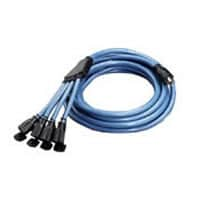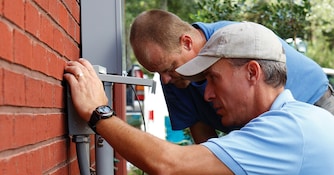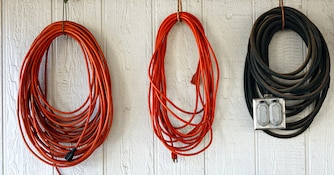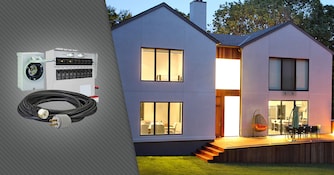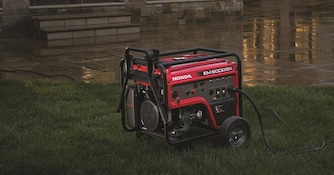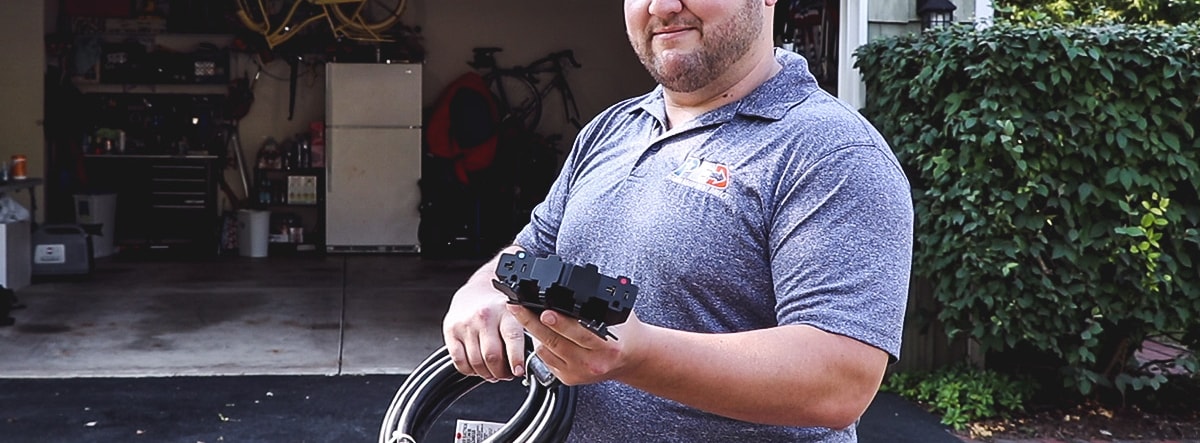
{"storeInfo":{"id":7,"name":"Electric Generators Direct","domain":"electricgeneratorsdirect.com","initials":"EGD","url":"https:\/\/www.electricgeneratorsdirect.com","path":"\/var\/www\/vhosts\/egd.com\/"},"headerNavJSON":"{\"MainLinks\":[{\"URL\":\"\\\/power\\\/portable-generators.html\",\"displayText\":\"Portable Generators\",\"sectionLinks\":{\"columns\":\"6\",\"linkItems\":[{\"URL\":\"\\\/power\\\/recreational-generators.html\",\"imageURL\":\"\\\/nav-image\\\/100\\\/RecGen_100x100_8e0d1b5eda78548a46e699dbbe2715f4.jpg\",\"displayText\":\"Recreational\"},{\"URL\":\"\\\/power\\\/emergency-portable-generators.html\",\"imageURL\":\"\\\/nav-image\\\/100\\\/portable-7-2.jpg\",\"displayText\":\"Emergency (Backup)\"},{\"URL\":\"\\\/power\\\/professional-portable-generators.html\",\"imageURL\":\"\\\/nav-image\\\/100\\\/portable-7-3.jpg\",\"displayText\":\"Professional\"},{\"URL\":\"\\\/power\\\/inverter-generators.html\",\"imageURL\":\"\\\/nav-image\\\/100\\\/portable-7-4.jpg\",\"displayText\":\"Inverter\"},{\"URL\":\"\\\/power\\\/solar-generators.html\",\"imageURL\":\"\\\/nav-image\\\/100\\\/ecoflow_delta_nav_fd3833954cfd584f648706ebd875bcc2.jpg\",\"displayText\":\"Solar\"},{\"URL\":\"\\\/power\\\/portable-generator-accessories.html\",\"imageURL\":\"\\\/nav-image\\\/100\\\/portable-7-6.jpg\",\"displayText\":\"Accessories\"}]},\"subCategories\":[{\"URL\":null,\"type\":\"list\",\"title\":\"Popular Brands\",\"linkItems\":[{\"URL\":\"\\\/power\\\/generac-portable-generators.html\",\"displayText\":\"Generac\"},{\"URL\":\"\\\/power\\\/honda-generators.html\",\"displayText\":\"Honda\"},{\"URL\":\"\\\/power\\\/champion-generators.html\",\"displayText\":\"Champion\"},{\"URL\":\"\\\/power\\\/westinghouse-generators.html\",\"displayText\":\"Westinghouse\"},{\"URL\":\"\\\/power\\\/winco-portable-generators.html\",\"displayText\":\"Winco\"}]},{\"URL\":null,\"type\":\"list\",\"title\":\"Shop by Fuel Type\",\"linkItems\":[{\"URL\":\"\\\/power\\\/diesel-portable-generators.html\",\"displayText\":\"Diesel\"},{\"URL\":\"\\\/power\\\/portable-dual-fuel-generators.html\",\"displayText\":\"Dual Fuel\"},{\"URL\":\"\\\/power\\\/gas-portable-generators.html\",\"displayText\":\"Gas\"},{\"URL\":\"\\\/power\\\/propane-portable-generators.html\",\"displayText\":\"Propane (LP)\"},{\"URL\":\"\\\/power\\\/natural-gas-portable-generators.html\",\"displayText\":\"Natural Gas\"}]},{\"URL\":null,\"type\":\"list\",\"title\":\"Popular Categories\",\"linkItems\":[{\"URL\":\"\\\/power\\\/camping-generators.html\",\"displayText\":\"Camping\"},{\"URL\":\"\\\/power\\\/electric-start-portable-generators.html\",\"displayText\":\"Electric Start\"},{\"URL\":\"\\\/power\\\/remote-start-generators.html\",\"displayText\":\"Remote Start\"},{\"URL\":\"\\\/power\\\/tailgate-generators.html\",\"displayText\":\"Tailgating\"},{\"URL\":\"\\\/power\\\/in-stock-portable-generators.html\",\"displayText\":\"In-Stock\"}]},{\"URL\":\"\\\/stories\\\/306-How-to-Pick-the-Perfect-Portable-Generator.html\",\"type\":\"image\",\"title\":\"Buyer's Guide\",\"imageURL\":\"\\\/nav-article-image\\\/305\\\/social_img_306.jpg\",\"linkItems\":[],\"displayText\":\"Portable Generator Buyer's Guide\"}]},{\"URL\":\"\\\/power\\\/home-standby-generators.html\",\"displayText\":\"Home Standby Generators\",\"sectionLinks\":{\"columns\":\"6\",\"linkItems\":[{\"URL\":\"\\\/power\\\/24-26-kw-home-standby-generators.html\",\"imageURL\":\"\\\/nav-image\\\/100\\\/standby-7-7_fdb8e94fbf88f273bfd2976d62042d0f.jpg\",\"displayText\":\"24-26kW\"},{\"URL\":\"\\\/power\\\/20-kw-22-kw-home-standby-generators.html\",\"imageURL\":\"\\\/nav-image\\\/100\\\/standby-7-1.jpg\",\"displayText\":\"20-22kW\"},{\"URL\":\"\\\/power\\\/13-18-kw-home-standby-generators.html\",\"imageURL\":\"\\\/nav-image\\\/100\\\/14kw_d288f6cf086641884099f3b30e520701.jpg\",\"displayText\":\"13-18kW\"},{\"URL\":\"\\\/power\\\/10-kw-12-kw-home-standby-generators.html\",\"imageURL\":\"\\\/nav-image\\\/100\\\/standby-7-4.jpg\",\"displayText\":\"10-12kW\"},{\"URL\":\"\\\/power\\\/whole-house-standby-generators.html\",\"imageURL\":\"\\\/nav-image\\\/100\\\/standby-7-6.jpg\",\"displayText\":\"Whole House\"},{\"URL\":\"\\\/power\\\/7-kw-9-kw-home-standby-generators.html\",\"imageURL\":\"\\\/nav-image\\\/100\\\/generacpowerpack_dde7cdb6f64fa80c92d11f1a36d5ebca.jpg\",\"displayText\":\"7-9kW\"}]},\"subCategories\":[{\"URL\":null,\"type\":\"list\",\"title\":\"Popular Brands\",\"linkItems\":[{\"URL\":\"\\\/power\\\/generac-home-standby-generators.html\",\"displayText\":\"Generac\"},{\"URL\":\"\\\/power\\\/kohler-home-standby-generators.html\",\"displayText\":\"Kohler\"},{\"URL\":\"\\\/power\\\/briggs-and-stratton-home-standby-generators.html\",\"displayText\":\"Briggs & Stratton\"},{\"URL\":\"\\\/power\\\/cummins-onan-home-standby-generators.html\",\"displayText\":\"Cummins\"},{\"URL\":\"\\\/power\\\/winco-standby-generators.html\",\"displayText\":\"Winco\"}]},{\"URL\":null,\"type\":\"list\",\"title\":\"Shop by Fuel Type\",\"linkItems\":[{\"URL\":\"\\\/power\\\/liquid-propane-home-standby-generators.html\",\"displayText\":\"Propane (LP)\"},{\"URL\":\"\\\/power\\\/natural-gas-home-standby-generators.html\",\"displayText\":\"Natural Gas\"},{\"URL\":\"\\\/power\\\/diesel-home-standby-generators.html\",\"displayText\":\"Diesel\"}]},{\"URL\":null,\"type\":\"list\",\"title\":\"Shop By Switch Amps\",\"linkItems\":[{\"URL\":\"\\\/power\\\/50-amp-home-standby-generators.html\",\"displayText\":\"50-Amp\"},{\"URL\":\"\\\/power\\\/100-amp-home-standby-generators.html\",\"displayText\":\"100-Amp\"},{\"URL\":\"\\\/power\\\/150-amp-home-standby-generators.html\",\"displayText\":\"150-Amp\"},{\"URL\":\"\\\/power\\\/200-amp-home-standby-generators.html\",\"displayText\":\"200-Amp\"},{\"URL\":\"\\\/power\\\/400-amp-home-standby-generators.html\",\"displayText\":\"400-Amp\"}]},{\"URL\":\"\\\/stories\\\/36-How-to-Pick-the-Perfect-Home-Standby-Generator.html\",\"type\":\"image\",\"title\":\"Buyer's Guide\",\"imageURL\":\"\\\/nav-article-image\\\/305\\\/social_img_36.jpg\",\"linkItems\":[],\"displayText\":\"Home Standby Generator Buyer's Guide\"}]},{\"URL\":\"\\\/power\\\/commercial-generators.html\",\"displayText\":\"Commercial Generators\",\"sectionLinks\":{\"columns\":\"6\",\"linkItems\":[{\"URL\":\"\\\/power\\\/commercial-standby-generators.html\",\"imageURL\":\"\\\/nav-image\\\/100\\\/commercial-7-1.jpg\",\"displayText\":\"Standby\"},{\"URL\":\"\\\/power\\\/towable-generators.html\",\"imageURL\":\"\\\/nav-image\\\/100\\\/commercial-7-2.jpg\",\"displayText\":\"Towable\"},{\"URL\":\"\\\/power\\\/skid-mount-generators.html\",\"imageURL\":\"\\\/nav-image\\\/100\\\/commercial-7-3.jpg\",\"displayText\":\"Skid Mount\"},{\"URL\":\"\\\/power\\\/light-towers.html\",\"imageURL\":\"\\\/nav-image\\\/100\\\/commercial-7-4.jpg\",\"displayText\":\"Light Towers\"},{\"URL\":\"\\\/power\\\/commercial-mobile-generators.html\",\"imageURL\":\"\\\/nav-image\\\/100\\\/commercial-7-5.jpg\",\"displayText\":\"Mobile\"}]},\"subCategories\":[{\"URL\":null,\"type\":\"list\",\"title\":\"Popular Brands\",\"linkItems\":[{\"URL\":\"\\\/power\\\/briggs-and-stratton-commercial-standby-generators.html\",\"displayText\":\"Briggs & Stratton\"},{\"URL\":\"\\\/power\\\/cummins-onan-commercial-generators.html\",\"displayText\":\"Cummins\"},{\"URL\":\"\\\/power\\\/generac-commercial-generators.html\",\"displayText\":\"Generac\"},{\"URL\":\"\\\/power\\\/kohler-commercial-standby-generators.html\",\"displayText\":\"Kohler\"},{\"URL\":\"\\\/power\\\/honeywell-commercial-standby-generators.html\",\"displayText\":\"Honeywell\"}]},{\"URL\":null,\"type\":\"list\",\"title\":\"Shop by Fuel Type\",\"linkItems\":[{\"URL\":\"\\\/power\\\/liquid-propane-commercial-standby-generators.html\",\"displayText\":\"Propane (LP)\"},{\"URL\":\"\\\/power\\\/natural-gas-commercial-standby-generators.html\",\"displayText\":\"Natural Gas\"},{\"URL\":\"\\\/power\\\/diesel-commercial-generators.html\",\"displayText\":\"Diesel\"}]},{\"URL\":null,\"type\":\"list\",\"title\":\"Shop by Voltage\",\"linkItems\":[{\"URL\":\"\\\/power\\\/120-240v-single-phase-commercial-generators.html\",\"displayText\":\"120\\\/240 1P\"},{\"URL\":\"\\\/power\\\/120-240v-three-phase-commercial-generators.html\",\"displayText\":\"120\\\/240 3P\"},{\"URL\":\"\\\/power\\\/120-208v-three-phase-commercial-generators.html\",\"displayText\":\"120\\\/208 3P\"},{\"URL\":\"\\\/power\\\/277-480v-three-phase-commercial-generators.html\",\"displayText\":\"277\\\/480 3P\"}]},{\"URL\":\"\\\/stories\\\/47-How-to-Pick-the-Perfect-Commercial-Generator.html\",\"type\":\"image\",\"title\":\"Buyer's Guide\",\"imageURL\":\"\\\/nav-article-image\\\/305\\\/social_img_47.jpg\",\"linkItems\":[],\"displayText\":\"Commercial Generator Buyer's Guide\"}]},{\"URL\":\"\\\/power\\\/rv-generators.html\",\"displayText\":\"RV Generators\",\"sectionLinks\":{\"columns\":\"6\",\"linkItems\":[{\"URL\":\"\\\/power\\\/portable-rv-generators.html\",\"imageURL\":\"\\\/nav-image\\\/100\\\/rv-7-1.jpg\",\"displayText\":\"Portable RV\"},{\"URL\":\"\\\/power\\\/gas-rv-generators.html\",\"imageURL\":\"\\\/nav-image\\\/100\\\/rv-7-2.jpg\",\"displayText\":\"Gas RV\"},{\"URL\":\"\\\/power\\\/lp-rv-generators.html\",\"imageURL\":\"\\\/nav-image\\\/100\\\/rv-7-3.jpg\",\"displayText\":\"LP RV\"},{\"URL\":\"\\\/power\\\/diesel-rv-generators.html\",\"imageURL\":\"\\\/nav-image\\\/100\\\/rv-7-4.jpg\",\"displayText\":\"Diesel RV\"},{\"URL\":\"\\\/power\\\/commercial-rv-generators.html\",\"imageURL\":\"\\\/nav-image\\\/100\\\/rv-7-5.jpg\",\"displayText\":\"Commercial Mobile\"}]},\"subCategories\":[{\"URL\":null,\"type\":\"list\",\"title\":\"Portable Accessories\",\"linkItems\":[{\"URL\":\"\\\/power\\\/inverter-generators.html\",\"displayText\":\"Inverter\"},{\"URL\":\"\\\/power\\\/portable-generators-with-rv-plug.html\",\"displayText\":\"RV Outlet\"},{\"URL\":\"\\\/power\\\/remote-start-generators.html\",\"displayText\":\"Remote Start\"},{\"URL\":\"\\\/power\\\/conventional-portable-generators.html\",\"displayText\":\"Conventional\"},{\"URL\":\"\\\/power\\\/camping-generators.html\",\"displayText\":\"Camping\"}]},{\"URL\":null,\"type\":\"list\",\"title\":\"Popular Brands\",\"linkItems\":[{\"URL\":\"\\\/power\\\/briggs-and-stratton-rv-generators.html\",\"displayText\":\"Briggs & Stratton\"},{\"URL\":\"\\\/power\\\/champion-rv-generators.html\",\"displayText\":\"Champion\"},{\"URL\":\"\\\/power\\\/cummins-onan-rv-generators.html\",\"displayText\":\"Cummins\"},{\"URL\":\"\\\/power\\\/firman-rv-generators.html\",\"displayText\":\"Firman\"},{\"URL\":\"\\\/power\\\/generac-rv-generator.html\",\"displayText\":\"Generac\"},{\"URL\":\"\\\/power\\\/goal-zero-rv-generators.html\",\"displayText\":\"Goal Zero\"},{\"URL\":\"\\\/power\\\/honda-rv-generators.html\",\"displayText\":\"Honda\"},{\"URL\":\"\\\/power\\\/yamaha-rv-generators.html\",\"displayText\":\"Yamaha\"},{\"URL\":\"\\\/power\\\/westinghouse-rv-generators.html\",\"displayText\":\"Westinghouse\"}]},{\"URL\":\"\\\/stories\\\/155-How-to-Pick-the-Perfect-RV-Generator.html\",\"type\":\"image\",\"title\":\"Buyer's Guide\",\"imageURL\":\"\\\/nav-article-image\\\/305\\\/social_img_155.jpg\",\"linkItems\":[],\"displayText\":\"RV Generator Buyer's Guide\"}]},{\"URL\":\"\\\/power\\\/pto-generators.html\",\"displayText\":\"PTO Generators\",\"sectionLinks\":{\"columns\":\"6\",\"linkItems\":[{\"URL\":\"\\\/power\\\/540-rpm-pto-generators.html\",\"imageURL\":\"\\\/nav-image\\\/100\\\/pto-7-1.jpg\",\"displayText\":\"540 RPM\"},{\"URL\":\"\\\/power\\\/1000-rpm-pto-generators.html\",\"imageURL\":\"\\\/nav-image\\\/100\\\/pto-7-2.jpg\",\"displayText\":\"1000 RPM\"},{\"URL\":\"\\\/power\\\/pto-generator-transfer-switches.html\",\"imageURL\":\"\\\/nav-image\\\/100\\\/pto-7-3.jpg\",\"displayText\":\"Transfer Switches\"},{\"URL\":\"\\\/accessories.php#pto\",\"imageURL\":\"\\\/nav-image\\\/100\\\/pto-7-4.jpg\",\"displayText\":\"Accessories\"}]},\"subCategories\":[{\"URL\":null,\"type\":\"list\",\"title\":\"Popular Brands\",\"linkItems\":[{\"URL\":\"\\\/power\\\/imd-pto-generators.html\",\"displayText\":\"IMD\"},{\"URL\":\"\\\/power\\\/winco-pto-generators.html\",\"displayText\":\"Winco\"}]},{\"URL\":null,\"type\":\"list\",\"title\":\"Shop by Watts\",\"linkItems\":[{\"URL\":\"\\\/power\\\/10-20-kw-pto-generators.html\",\"displayText\":\"10-20kW\"},{\"URL\":\"\\\/power\\\/20-40-kw-pto-generators.html\",\"displayText\":\"20-40kW\"},{\"URL\":\"\\\/power\\\/40-60-kw-pto-generators.html\",\"displayText\":\"40-60kW\"},{\"URL\":\"\\\/power\\\/60-100-kw-pto-generators.html\",\"displayText\":\"60-100kW\"},{\"URL\":\"\\\/power\\\/100-plus-kw-pto-generators.html\",\"displayText\":\"100+kW\"}]},{\"URL\":null,\"type\":\"list\",\"title\":\"Shop by Voltage\",\"linkItems\":[{\"URL\":\"\\\/power\\\/120-240-volt-single-phase-pto-generators.html\",\"displayText\":\"120\\\/240 1P\"},{\"URL\":\"\\\/power\\\/120-240-volt-three-phase-pto-generators.html\",\"displayText\":\"120\\\/240 3P\"},{\"URL\":\"\\\/power\\\/120-208-volt-3-phase-pto-generators.html\",\"displayText\":\"120\\\/208 3P\"},{\"URL\":\"\\\/power\\\/277-480-volt-3-phase-pto-generators.html\",\"displayText\":\"277\\\/480 3P\"}]},{\"URL\":\"\\\/stories\\\/22-How-to-Pick-the-Perfect-Power-Take-Off-Generator.html\",\"type\":\"image\",\"title\":\"Buyer's Guide\",\"imageURL\":\"\\\/nav-article-image\\\/305\\\/social_img_22.jpg\",\"linkItems\":[],\"displayText\":\"PTO Generator Buyer's Guide\"}]},{\"URL\":\"\\\/power\\\/solar-generators.html\",\"displayText\":\"Solar\",\"sectionLinks\":{\"columns\":\"6\",\"linkItems\":[{\"URL\":\"\\\/power\\\/portable-power-stations.html\",\"imageURL\":\"\\\/nav-image\\\/100\\\/powerstation_27c198108d1ae6465e8ca5d74faceecc.jpg\",\"displayText\":\"Portable Power Stations\"},{\"URL\":\"\\\/power\\\/home-solar-generators.html\",\"imageURL\":\"\\\/nav-image\\\/100\\\/kohler-power-reserve-nav_e21477bcefd71712d8e7a52662d5763d.jpg\",\"displayText\":\"Whole Home\"},{\"URL\":\"\\\/power\\\/battery-storage.html\",\"imageURL\":\"\\\/nav-image\\\/100\\\/inverter_316e5a592e91670dd80b3eb884cdf7ac.jpg\",\"displayText\":\"Battery Storage\"},{\"URL\":\"\\\/power\\\/off-grid-generators.html\",\"imageURL\":\"\\\/nav-image\\\/100\\\/offgrid_63a10f60d1c97a0757d4b4ee77eb8cef.jpg\",\"displayText\":\"Off Grid\"}]},\"subCategories\":[{\"URL\":null,\"type\":\"list\",\"title\":\"Popular Brands\",\"linkItems\":[{\"URL\":\"\\\/power\\\/generac-pwrcell.html\",\"displayText\":\"Generac PWRcell\"},{\"URL\":\"\\\/power\\\/ecoflow.html\",\"displayText\":\"EcoFlow\"},{\"URL\":\"\\\/power\\\/anker-solix-generators.html\",\"displayText\":\"Anker SOLIX\"},{\"URL\":\"\\\/power\\\/westinghouse-solar-generators.html\",\"displayText\":\"Westinghouse\"},{\"URL\":\"\\\/power\\\/kohler-solar-generators.html\",\"displayText\":\"Kohler\"}]},{\"URL\":\"\\\/stories\\\/1935-Home-Energy-Storage-Buyers-Guide.html\",\"type\":\"image\",\"title\":\"Buyer's Guide\",\"imageURL\":\"\\\/nav-article-image\\\/305\\\/social_img_1935_b00b6a4314e8dfe5f593d9f4b71a2192.jpg\",\"linkItems\":[],\"displayText\":\"How to Get Free Electricity at Home\"}]},{\"URL\":\"\\\/power\\\/transfer-switches.html\",\"displayText\":\"Transfer Switches\",\"sectionLinks\":{\"columns\":\"6\",\"linkItems\":[{\"URL\":\"\\\/power\\\/automatic-transfer-switches.html\",\"imageURL\":\"\\\/nav-image\\\/100\\\/transfer-switch-7-1.jpg\",\"displayText\":\"Automatic Switches\"},{\"URL\":\"\\\/power\\\/manual-transfer-switches.html\",\"imageURL\":\"\\\/nav-image\\\/100\\\/transfer-switch-7-2.jpg\",\"displayText\":\"Manual Switches\"},{\"URL\":\"\\\/power\\\/power-transfer-systems.html\",\"imageURL\":\"\\\/nav-image\\\/100\\\/transfer-switch-7-3.jpg\",\"displayText\":\"Complete Transfer Systems\"}]},\"subCategories\":[{\"URL\":null,\"type\":\"list\",\"title\":\"Popular Brands\",\"linkItems\":[{\"URL\":\"\\\/power\\\/briggs-and-stratton-transfer-switches.html\",\"displayText\":\"Briggs & Stratton\"},{\"URL\":\"\\\/power\\\/automatic-transfer-switch-cummins-onan.html\",\"displayText\":\"Cummins\"},{\"URL\":\"\\\/power\\\/generac-transfer-switches.html\",\"displayText\":\"Generac\"},{\"URL\":\"\\\/power\\\/automatic-transfer-switch-kohler.html\",\"displayText\":\"Kohler\"},{\"URL\":\"\\\/power\\\/reliance-controls-manual-transfer-switches.html\",\"displayText\":\"Reliance Controls\"}]},{\"URL\":null,\"type\":\"list\",\"title\":\"ATS Amperage\",\"linkItems\":[{\"URL\":\"\\\/power\\\/automatic-transfer-switch-100a.html\",\"displayText\":\"100-Amp\"},{\"URL\":\"\\\/power\\\/150-amp-automatic-transfer-switches.html\",\"displayText\":\"150-Amp\"},{\"URL\":\"\\\/power\\\/automatic-transfer-switch-200a.html\",\"displayText\":\"200-Amp\"},{\"URL\":\"\\\/power\\\/automatic-transfer-switch-400a.html\",\"displayText\":\"400-Amp\"},{\"URL\":\"\\\/power\\\/automatic-transfer-switch-600a.html\",\"displayText\":\"600-Amp\"}]},{\"URL\":null,\"type\":\"list\",\"title\":\"MTS Amperage\",\"linkItems\":[{\"URL\":\"\\\/power\\\/manual-transfer-switch-15a-120v.html\",\"displayText\":\"15-Amp\"},{\"URL\":\"\\\/power\\\/manual-transfer-switches-20a-120v.html\",\"displayText\":\"20-Amp\"},{\"URL\":\"\\\/power\\\/manual-transfer-switches-30a-120v.html\",\"displayText\":\"30-Amp\"},{\"URL\":\"\\\/power\\\/manual-transfer-switches-50a-twistlock.html\",\"displayText\":\"50-Amp\"},{\"URL\":\"\\\/power\\\/60-amp-manual-transfer-panels.html\",\"displayText\":\"60-Amp\"}]},{\"URL\":\"\\\/stories\\\/59-How-to-Connect-a-Portable-Generator-to-a-Home.html\",\"type\":\"image\",\"title\":\"Buyer's Guide\",\"imageURL\":\"\\\/nav-article-image\\\/305\\\/social_img_59.jpg\",\"linkItems\":[],\"displayText\":\"How To Hook Up A Generator\"}]},{\"URL\":\"\\\/accessories.php\",\"displayText\":\"Generator Accessories\",\"sectionLinks\":{\"columns\":\"6\",\"linkItems\":[{\"URL\":\"\\\/power\\\/generator-power-cords.html\",\"imageURL\":\"\\\/nav-image\\\/100\\\/acc-7-1.jpg\",\"displayText\":\"Power Cords\"},{\"URL\":\"\\\/power\\\/power-inlet-boxes.html\",\"imageURL\":\"\\\/nav-image\\\/100\\\/acc-7-2.jpg\",\"displayText\":\"Inlet Boxes\"},{\"URL\":\"\\\/power\\\/generator-maintenance-kits.html\",\"imageURL\":\"\\\/nav-image\\\/100\\\/acc-7-3.jpg\",\"displayText\":\"Maintenance Kits\"},{\"URL\":\"\\\/power\\\/portable-generator-covers.html\",\"imageURL\":\"\\\/nav-image\\\/100\\\/acc-7-4.jpg\",\"displayText\":\"Covers & Tents\"},{\"URL\":\"\\\/power\\\/standby-generator-cold-weather-kits.html\",\"imageURL\":\"\\\/nav-image\\\/100\\\/acc-7-5.jpg\",\"displayText\":\"Cold Weather Kits\"},{\"URL\":\"\\\/accessories.php\",\"imageURL\":\"\\\/nav-image\\\/100\\\/acc-7-6.jpg\",\"displayText\":\"All Accessories\"}]},\"subCategories\":[{\"URL\":null,\"type\":\"list\",\"title\":\"Standby Accessories\",\"linkItems\":[{\"URL\":\"\\\/power\\\/automatic-transfer-switches.html\",\"displayText\":\"Automatic Transfer Switches\"},{\"URL\":\"\\\/power\\\/generator-pads.html\",\"displayText\":\"Generator Pads\"},{\"URL\":\"\\\/power\\\/generator-monitors.html\",\"displayText\":\"Monitors\"},{\"URL\":\"\\\/power\\\/standby-generator-load-management.html\",\"displayText\":\"Load Managers\"}]},{\"URL\":null,\"type\":\"list\",\"title\":\"Portable Accessories\",\"linkItems\":[{\"URL\":\"\\\/power\\\/manual-transfer-switches.html\",\"displayText\":\"Manual Transfer Switches\"},{\"URL\":\"\\\/power\\\/generator-convenience-cords.html\",\"displayText\":\"Convenience Cords\"},{\"URL\":\"\\\/power\\\/inverter-generator-parallel-cables.html\",\"displayText\":\"Parallel Cables\"},{\"URL\":\"\\\/power\\\/generator-wheel-kits.html\",\"displayText\":\"Wheel Kits\"},{\"URL\":\"\\\/power\\\/generator-plugs-and-connectors.html\",\"displayText\":\"Plugs & Connectors\"}]},{\"URL\":null,\"type\":\"list\",\"title\":\"RV Accessories\",\"linkItems\":[{\"URL\":\"\\\/power\\\/rv-generator-remote-panels-and-wire-harnesses.html\",\"displayText\":\"Panels & Harnesses\"},{\"URL\":\"\\\/power\\\/portable-generator-rv-power-cords.html\",\"displayText\":\"RV Cords\"},{\"URL\":\"\\\/power\\\/rv-adapters.html\",\"displayText\":\"RV Adapters\"},{\"URL\":\"\\\/power\\\/remote-start-kits.html\",\"displayText\":\"Remote Start Kits\"},{\"URL\":\"\\\/power\\\/rv-generator-parallel-cables.html\",\"displayText\":\"Parallel Cables\"}]},{\"URL\":null,\"type\":\"list\",\"title\":\"PTO Accessories\",\"linkItems\":[{\"URL\":\"\\\/power\\\/pto-generator-tumbling-bars.html\",\"displayText\":\"Tumbling Bars\"},{\"URL\":\"\\\/power\\\/pto-generator-trailer-kits.html\",\"displayText\":\"Trailer Kits\"},{\"URL\":\"\\\/power\\\/pto-generator-3-point-hitches.html\",\"displayText\":\"3 Point Hitches\"},{\"URL\":\"\\\/power\\\/pto-generator-transfer-switches.html\",\"displayText\":\"Transfer Switches\"}]}]},{\"URL\":\"\\\/how-to-library.php\",\"displayText\":\"How-to Library\",\"sectionLinks\":{\"columns\":\"6\",\"linkItems\":[{\"URL\":\"\\\/stories_info.php?stories_id=36\",\"imageURL\":\"\\\/nav-article-image\\\/305\\\/social_img_36.jpg\",\"displayText\":\"Home Standby Generator Buyer's Guide\"},{\"URL\":\"\\\/stories_info.php?stories_id=306\",\"imageURL\":\"\\\/nav-article-image\\\/305\\\/social_img_306.jpg\",\"displayText\":\"Portable Generator Buyer's Guide\"},{\"URL\":\"\\\/stories_info.php?stories_id=1469\",\"imageURL\":\"\\\/nav-article-image\\\/305\\\/social_img_1469.jpg\",\"displayText\":\"Home Standby Generator Calculator\"},{\"URL\":\"\\\/stories_info.php?stories_id=781\",\"imageURL\":\"\\\/nav-image\\\/100\\\/bestegd_881d0e220474dd31c5adf228e661054e.jpg\",\"displayText\":\"The Best Electric Generators of 2023\"}]},\"subCategories\":[{\"URL\":null,\"type\":\"list\",\"title\":\"Helpful Articles\",\"linkItems\":[{\"URL\":\"\\\/stories_info.php?stories_id=1649\",\"displayText\":\"What Kind of Generator do I Need for my House\"},{\"URL\":\"\\\/stories_info.php?stories_id=305\",\"displayText\":\"Generator Buyer's Guide\"},{\"URL\":\"\\\/stories_info.php?stories_id=59\",\"displayText\":\"How to Hook Up a Generator\"},{\"URL\":\"\\\/stories_info.php?stories_id=676\",\"displayText\":\"The Best Portable Generators of 2023\"},{\"URL\":\"\\\/stories_info.php?stories_id=10\",\"displayText\":\"Power Transfer System Buyer's Guide\"},{\"URL\":\"\\\/stories_info.php?stories_id=677\",\"displayText\":\"The Best Standby Generators of 2023\"},{\"URL\":\"\\\/stories_info.php?stories_id=155\",\"displayText\":\"RV Generator Buyer's Guide\"},{\"URL\":\"\\\/stories_info.php?stories_id=1463\",\"displayText\":\"How to Start a Generator\"},{\"URL\":\"\\\/stories_info.php?stories_id=1485\",\"displayText\":\"How Generators Work\"},{\"URL\":\"\\\/stories_info.php?stories_id=1634\",\"displayText\":\"How to Save Electricity with Load Shedding\"}]},{\"URL\":\"\\\/how-to-library.php\",\"type\":\"button\",\"title\":\"Visit Our How-To Library\",\"linkItems\":[],\"displayText\":\"We make buying technical products simple. Get helpful tips and buying advice from our experts.\"}]},{\"URL\":\"\\\/power\\\/electric-generators-on-sale.html\",\"displayText\":\"Specials\",\"sectionLinks\":{\"columns\":\"6\",\"linkItems\":[{\"URL\":\"\\\/power\\\/portable-generators-on-sale.html\",\"imageURL\":\"\\\/nav-image\\\/100\\\/portable-7-4.jpg\",\"displayText\":\"Portable Generators On Sale\"},{\"URL\":\"\\\/power\\\/standby-generators-on-sale.html\",\"imageURL\":\"\\\/nav-image\\\/100\\\/standby-7-1.jpg\",\"displayText\":\"Standby Generators On Sale\"},{\"URL\":\"\\\/power\\\/pto-generators-on-sale.html\",\"imageURL\":\"\\\/nav-image\\\/100\\\/pto-7-2.jpg\",\"displayText\":\"PTO Generators On Sale\"},{\"URL\":\"\\\/power\\\/rv-generators-on-sale.html\",\"imageURL\":\"\\\/nav-image\\\/100\\\/rv-7-2.jpg\",\"displayText\":\"RV Generators On Sale\"},{\"URL\":\"\\\/power\\\/towable-generators-on-sale.html\",\"imageURL\":\"\\\/nav-image\\\/100\\\/commercial-7-2.jpg\",\"displayText\":\"Towable Generators On Sale\"},{\"URL\":\"\\\/power\\\/generator-accessories-on-sale.html\",\"imageURL\":\"\\\/nav-image\\\/100\\\/acc-7-5.jpg\",\"displayText\":\"Generators Accessories On Sale\"},{\"URL\":\"\\\/power\\\/electric-generators-on-sale.html\",\"imageURL\":\"\\\/nav-image\\\/100\\\/portable-7-2.jpg\",\"displayText\":\"All Generators On Sale\"}]},\"subCategories\":[]}],\"USP\":[{\"id\":\"473\",\"URL\":\"\\\/stories\\\/473-How-To-Get-Free-Shipping-On-Generators.html\",\"className\":\"icon-nav-usp-shipping\",\"displayText\":\"Free Shipping\"},{\"id\":\"511\",\"URL\":\"\\\/stories\\\/511-How-to-Easily-Unload-a-Generator.html\",\"className\":\"icon-nav-usp-liftgate\",\"displayText\":\"Free Liftgate\"},{\"id\":\"1266\",\"URL\":\"\\\/stories\\\/1266-How-to-Finance-Your-Backup-Generator-Purchase.html\",\"className\":\"icon-nav-usp-financing\",\"displayText\":\"Financing\"},{\"id\":\"2001\",\"URL\":\"\\\/stories\\\/2001-New-Customer-Referral-Program.html\",\"className\":\"icon-referral\",\"displayText\":\"Customer Referral Program\"}]}","siteLinkJSON":"{\"Resources\":{\"How to Library\":{\"href\":\"how-to-library.php\",\"title\":\"Electric Generators Direct How-To Library\"},\"Product Reviews\":{\"href\":\"reviews.php\",\"title\":\"Customer Reviews on Electric Generators Direct Products\"},\"Recommendations\":{\"href\":\"stories\\\/781-Best-Selling-and-Top-Rated-Generators.html\",\"title\":\"Product Recommendations\"},\"Weekly Specials\":{\"href\":\"power\\\/electric-generators-on-sale.html\",\"title\":\"Weekly Electric Generators Direct Specials\"},\"Manuals\":{\"href\":\"stories\\\/403-How-to-Access-Old-Generator-Manuals.html\",\"title\":\"Manual Lookup\"},\"Service Centers\":{\"href\":\"stories\\\/410-How-to-Find-a-Service-Center-For-Your-Generator.html\",\"title\":\"Service Centers\"},\"Technical Support\":{\"href\":\"stories\\\/422-How-to-Find-Tech-Support-For-Your-Generator.html\",\"title\":\"Technical Support\"}},\"Account\":{\"My Account\":{\"href\":\"account.php\",\"title\":\"Login to My Account\"},\"Email Preferences\":{\"href\":\"https:\\\/\\\/www.powerequipmentdirect.com\\\/newsletter_removal.php\",\"title\":\"Email Preferences\"},\"Manufacturer Login\":{\"href\":\"https:\\\/\\\/www.powerequipmentdirect.com\\\/partnerships\\\/login.php\",\"title\":\"Manufacturer Login\"}},\"Customer Service\":{\"Help Center\":{\"href\":\"contact_us.php\",\"title\":\"Help Center\"},\"Return Policy\":{\"href\":\"returns.php\",\"title\":\"Return Policy\"},\"Shipping Policy\":{\"href\":\"stories\\\/511-How-to-Easily-Unload-a-Generator.html\",\"title\":\"Shipping Policy\"},\"Product Recalls\":{\"href\":\"stories\\\/1495-Generator-Recalls.html\",\"title\":\"Product Recalls\"},\"Track Order\":{\"href\":\"ordertracking.php\",\"title\":\"Order Tracking\"},\"Financing\":{\"href\":\"stories\\\/1266-How-to-Finance-Your-Backup-Generator-Purchase.html\",\"title\":\"Financing\"},\"Accessibility\":{\"href\":\"stories\\\/1772-Our-Commitment-to-Accessibility.html\",\"title\":\"Accessibility\"},\"Do Not Sell or
Share My Personal Information\":{\"href\":\"https:\\\/\\\/ferguson.bigidprivacy.cloud\\\/consumer\\\/#\\\/dMf02ovZbN\\\/Form-NHWperWAaFNVIQK\",\"title\":\"Do Not Sell or Share My Personal Information\"}},\"About Us\":{\"Our Story\":{\"href\":\"https:\\\/\\\/www.powerequipmentdirect.com\\\/stories\\\/1982-How-We-Make-Buying-Technical-Products-Simple.html\",\"title\":\"Electric Generators Direct's Story\"},\"Careers\":{\"href\":\"https:\\\/\\\/www.powerequipmentdirect.com\\\/stories\\\/1924-Job-Openings.html\",\"title\":\"Careers @ Power Equipment Direct\"},\"Newsroom\":{\"href\":\"newsreleases.php\",\"title\":\"Electric Generators Direct News Center\"}},\"Contact Us\":{\"phone\":\"800-800-3317\",\"hours\":[\"M-F: 8-5 CST\",\"Sat: Closed\",\"Sun: Closed\"]}}","storeLinkJSON":"{\"AC Wholesalers\":{\"href\":\"https:\\\/\\\/www.acwholesalers.com\",\"title\":\"AC Wholesalers\"},\"Air Compressors Direct\":{\"href\":\"https:\\\/\\\/www.aircompressorsdirect.com\",\"title\":\"Air Compressors Direct\"},\"Chain Saws Direct\":{\"href\":\"https:\\\/\\\/www.chainsawsdirect.com\",\"title\":\"Chain Saws Direct\"},\"Chippers Direct\":{\"href\":\"https:\\\/\\\/www.chippersdirect.com\",\"title\":\"Chippers Direct\"},\"eComfort\":{\"href\":\"https:\\\/\\\/www.ecomfort.com\",\"title\":\"eComfort\"},\"Electric Generators Direct\":{\"href\":\"https:\\\/\\\/www.electricgeneratorsdirect.com\",\"title\":\"Electric Generators Direct\"},\"Leaf Blowers Direct\":{\"href\":\"https:\\\/\\\/www.leafblowersdirect.com\",\"title\":\"Leaf Blowers Direct\"},\"Log Splitters Direct\":{\"href\":\"https:\\\/\\\/www.logsplittersdirect.com\",\"title\":\"Log Splitters Direct\"},\"Mowers Direct\":{\"href\":\"https:\\\/\\\/www.mowersdirect.com\",\"title\":\"Mowers Direct\"},\"Power Equipment Direct\":{\"href\":\"https:\\\/\\\/www.powerequipmentdirect.com\",\"title\":\"Power Equipment Direct\"},\"Pressure Washers Direct\":{\"href\":\"https:\\\/\\\/www.pressurewashersdirect.com\",\"title\":\"Pressure Washers Direct\"},\"Snow Blowers Direct\":{\"href\":\"https:\\\/\\\/www.snowblowersdirect.com\",\"title\":\"Snow Blowers Direct\"},\"String Trimmers Direct\":{\"href\":\"https:\\\/\\\/www.stringtrimmersdirect.com\",\"title\":\"String Trimmers Direct\"},\"Sump Pumps Direct\":{\"href\":\"https:\\\/\\\/www.sumppumpsdirect.com\",\"title\":\"Sump Pumps Direct\"},\"Tillers Direct\":{\"href\":\"https:\\\/\\\/www.tillersdirect.com\",\"title\":\"Tillers Direct\"},\"Water Pumps Direct\":{\"href\":\"https:\\\/\\\/www.waterpumpsdirect.com\",\"title\":\"Water Pumps Direct\"}}","socialLinkJSON":"{\"Facebook\":{\"href\":\"https:\\\/\\\/www.facebook.com\\\/electricgeneratorsdirect\",\"icon\":\"icon-facebook\",\"title\":\"Facebook\"},\"Twitter\":{\"href\":\"http:\\\/\\\/twitter.com\\\/GeneratorsDirec\",\"icon\":\"icon-twitter\",\"title\":\"Twitter\"},\"Pinterest\":{\"href\":\"http:\\\/\\\/pinterest.com\\\/generatorsdirec\\\/\",\"icon\":\"icon-pinterest\",\"title\":\"Pinterest\"},\"YouTube\":{\"href\":\"https:\\\/\\\/www.youtube.com\\\/user\\\/ElectricGenerators\\\/\",\"icon\":\"icon-youtube\",\"title\":\"YouTube\"},\"Instagram\":{\"href\":\"https:\\\/\\\/www.instagram.com\\\/powerequipmentdirect\\\/\",\"icon\":\"icon-instagram\",\"title\":\"Instagram\"},\"LinkedIn\":{\"href\":\"https:\\\/\\\/www.linkedin.com\\\/company\\\/power-equipment-direct\\\/\",\"icon\":\"icon-linkedin\",\"title\":\"LinkedIn\"}}","miscLinkJSON":"{\"Terms of Use\":{\"href\":\"terms-of-use.php\",\"title\":\"Terms of Use\"},\"Privacy Policy & Security\":{\"href\":\"privacy.php\",\"title\":\"Privacy Policy and Security\"},\"Cookie Policy\":{\"href\":\"privacy.php#cookiePolicy\",\"title\":\"Cookie Policy\"},\"CA Privacy Rights\":{\"href\":\"privacy.php#californiaPrivacyRights\",\"title\":\"CA Privacy Rights\"},\"copyright\":\"© 2024 Power Equipment Direct. All Rights Reserved\"}","checkoutMiscLinkJSON":"{\"Privacy Policy & Security\":{\"href\":\"privacy.php\",\"title\":\"Privacy Policy and Security\"},\"Cookie Policy\":{\"href\":\"privacy.php#cookiePolicy\",\"title\":\"Cookie Policy\"},\"Terms of Use\":{\"href\":\"terms-of-use.php\",\"title\":\"Terms of Use\"},\"copyright\":\"© 2024 Power Equipment Direct. All Rights Reserved\"}","expertJSON":{"imageURL":"https:\/\/www.powerequipmentdirect.com\/images\/experts\/expert-main-7.png","href":"\/generator-product-expert.php","title":"Contact Jared @ Electric Generators Direct","expertName":"Jared","expertTitle":"Generator Expert"},"bbbJSON":{"imageURL":"https:\/\/www.powerequipmentdirect.com\/images\/badge-bbb.png","imageAlt":"Better Business Bureau","href":"http:\/\/www.bbb.org\/chicago\/business-reviews\/industrial-equipment-and-supplies\/power-equipment-direct-in-bolingbrook-il-57001088","title":"Electric Generators Direct - A+ Rating - Better Business Bureau"},"zipCode":null,"phoneNumber":"800-800-3317","loginToken":"page cache precludes the use of csrf tokens","iterable":"e4b27e68b9c84fbb940829a0a9ee29d7","newNav":false}
Share My Personal Information\":{\"href\":\"https:\\\/\\\/ferguson.bigidprivacy.cloud\\\/consumer\\\/#\\\/dMf02ovZbN\\\/Form-NHWperWAaFNVIQK\",\"title\":\"Do Not Sell or Share My Personal Information\"}},\"About Us\":{\"Our Story\":{\"href\":\"https:\\\/\\\/www.powerequipmentdirect.com\\\/stories\\\/1982-How-We-Make-Buying-Technical-Products-Simple.html\",\"title\":\"Electric Generators Direct's Story\"},\"Careers\":{\"href\":\"https:\\\/\\\/www.powerequipmentdirect.com\\\/stories\\\/1924-Job-Openings.html\",\"title\":\"Careers @ Power Equipment Direct\"},\"Newsroom\":{\"href\":\"newsreleases.php\",\"title\":\"Electric Generators Direct News Center\"}},\"Contact Us\":{\"phone\":\"800-800-3317\",\"hours\":[\"M-F: 8-5 CST\",\"Sat: Closed\",\"Sun: Closed\"]}}","storeLinkJSON":"{\"AC Wholesalers\":{\"href\":\"https:\\\/\\\/www.acwholesalers.com\",\"title\":\"AC Wholesalers\"},\"Air Compressors Direct\":{\"href\":\"https:\\\/\\\/www.aircompressorsdirect.com\",\"title\":\"Air Compressors Direct\"},\"Chain Saws Direct\":{\"href\":\"https:\\\/\\\/www.chainsawsdirect.com\",\"title\":\"Chain Saws Direct\"},\"Chippers Direct\":{\"href\":\"https:\\\/\\\/www.chippersdirect.com\",\"title\":\"Chippers Direct\"},\"eComfort\":{\"href\":\"https:\\\/\\\/www.ecomfort.com\",\"title\":\"eComfort\"},\"Electric Generators Direct\":{\"href\":\"https:\\\/\\\/www.electricgeneratorsdirect.com\",\"title\":\"Electric Generators Direct\"},\"Leaf Blowers Direct\":{\"href\":\"https:\\\/\\\/www.leafblowersdirect.com\",\"title\":\"Leaf Blowers Direct\"},\"Log Splitters Direct\":{\"href\":\"https:\\\/\\\/www.logsplittersdirect.com\",\"title\":\"Log Splitters Direct\"},\"Mowers Direct\":{\"href\":\"https:\\\/\\\/www.mowersdirect.com\",\"title\":\"Mowers Direct\"},\"Power Equipment Direct\":{\"href\":\"https:\\\/\\\/www.powerequipmentdirect.com\",\"title\":\"Power Equipment Direct\"},\"Pressure Washers Direct\":{\"href\":\"https:\\\/\\\/www.pressurewashersdirect.com\",\"title\":\"Pressure Washers Direct\"},\"Snow Blowers Direct\":{\"href\":\"https:\\\/\\\/www.snowblowersdirect.com\",\"title\":\"Snow Blowers Direct\"},\"String Trimmers Direct\":{\"href\":\"https:\\\/\\\/www.stringtrimmersdirect.com\",\"title\":\"String Trimmers Direct\"},\"Sump Pumps Direct\":{\"href\":\"https:\\\/\\\/www.sumppumpsdirect.com\",\"title\":\"Sump Pumps Direct\"},\"Tillers Direct\":{\"href\":\"https:\\\/\\\/www.tillersdirect.com\",\"title\":\"Tillers Direct\"},\"Water Pumps Direct\":{\"href\":\"https:\\\/\\\/www.waterpumpsdirect.com\",\"title\":\"Water Pumps Direct\"}}","socialLinkJSON":"{\"Facebook\":{\"href\":\"https:\\\/\\\/www.facebook.com\\\/electricgeneratorsdirect\",\"icon\":\"icon-facebook\",\"title\":\"Facebook\"},\"Twitter\":{\"href\":\"http:\\\/\\\/twitter.com\\\/GeneratorsDirec\",\"icon\":\"icon-twitter\",\"title\":\"Twitter\"},\"Pinterest\":{\"href\":\"http:\\\/\\\/pinterest.com\\\/generatorsdirec\\\/\",\"icon\":\"icon-pinterest\",\"title\":\"Pinterest\"},\"YouTube\":{\"href\":\"https:\\\/\\\/www.youtube.com\\\/user\\\/ElectricGenerators\\\/\",\"icon\":\"icon-youtube\",\"title\":\"YouTube\"},\"Instagram\":{\"href\":\"https:\\\/\\\/www.instagram.com\\\/powerequipmentdirect\\\/\",\"icon\":\"icon-instagram\",\"title\":\"Instagram\"},\"LinkedIn\":{\"href\":\"https:\\\/\\\/www.linkedin.com\\\/company\\\/power-equipment-direct\\\/\",\"icon\":\"icon-linkedin\",\"title\":\"LinkedIn\"}}","miscLinkJSON":"{\"Terms of Use\":{\"href\":\"terms-of-use.php\",\"title\":\"Terms of Use\"},\"Privacy Policy & Security\":{\"href\":\"privacy.php\",\"title\":\"Privacy Policy and Security\"},\"Cookie Policy\":{\"href\":\"privacy.php#cookiePolicy\",\"title\":\"Cookie Policy\"},\"CA Privacy Rights\":{\"href\":\"privacy.php#californiaPrivacyRights\",\"title\":\"CA Privacy Rights\"},\"copyright\":\"© 2024 Power Equipment Direct. All Rights Reserved\"}","checkoutMiscLinkJSON":"{\"Privacy Policy & Security\":{\"href\":\"privacy.php\",\"title\":\"Privacy Policy and Security\"},\"Cookie Policy\":{\"href\":\"privacy.php#cookiePolicy\",\"title\":\"Cookie Policy\"},\"Terms of Use\":{\"href\":\"terms-of-use.php\",\"title\":\"Terms of Use\"},\"copyright\":\"© 2024 Power Equipment Direct. All Rights Reserved\"}","expertJSON":{"imageURL":"https:\/\/www.powerequipmentdirect.com\/images\/experts\/expert-main-7.png","href":"\/generator-product-expert.php","title":"Contact Jared @ Electric Generators Direct","expertName":"Jared","expertTitle":"Generator Expert"},"bbbJSON":{"imageURL":"https:\/\/www.powerequipmentdirect.com\/images\/badge-bbb.png","imageAlt":"Better Business Bureau","href":"http:\/\/www.bbb.org\/chicago\/business-reviews\/industrial-equipment-and-supplies\/power-equipment-direct-in-bolingbrook-il-57001088","title":"Electric Generators Direct - A+ Rating - Better Business Bureau"},"zipCode":null,"phoneNumber":"800-800-3317","loginToken":"page cache precludes the use of csrf tokens","iterable":"e4b27e68b9c84fbb940829a0a9ee29d7","newNav":false}
We Make Buying Technical Products Simple


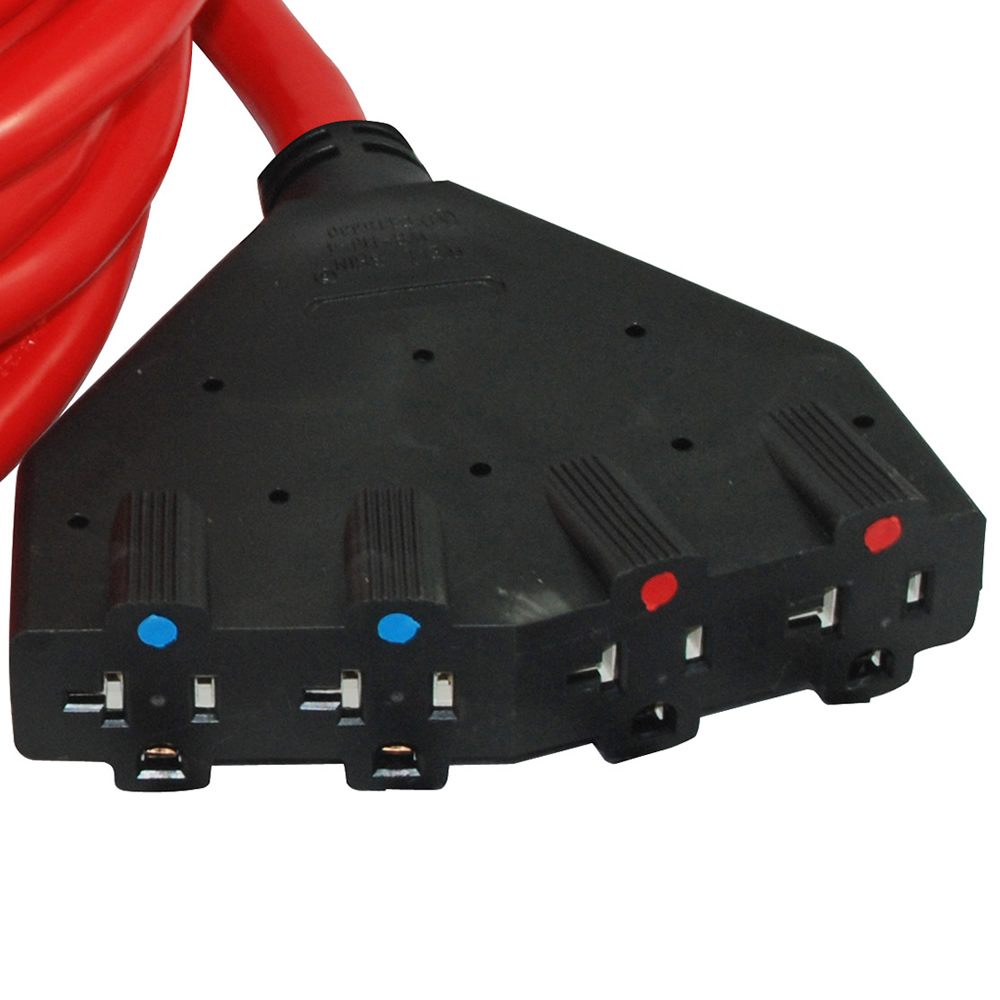 The most common way to use a portable electric generator is to place it outdoors, then run extension cords through an open window or door to the chosen appliances.
The most common way to use a portable electric generator is to place it outdoors, then run extension cords through an open window or door to the chosen appliances.